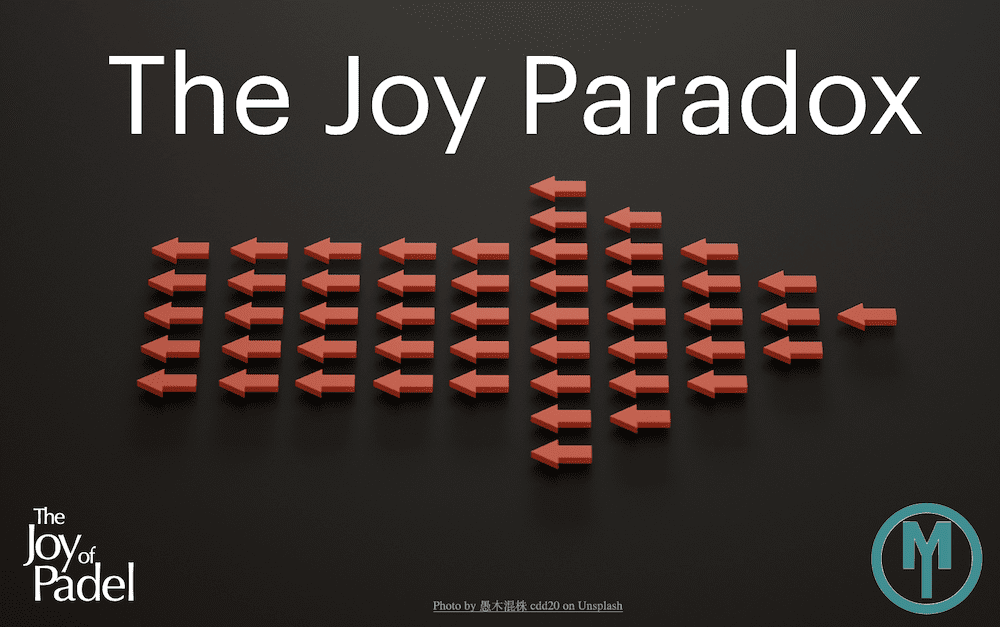The Alienation Epidemic: Reconnecting Employees to Meaningful Work
In today’s fast-paced and often stressful work environment where mental health issues are rife, the concept of joy in the workplace has gained significant attention. I know several organizations whose sole purpose is to heighten happiness at work, including Henry Stewart (Happy.co.uk) and Matt Phelan (The Happiness Index). On a bigger platform, you have Dan Harris, author and influencer, who runs the 10% Happier podcast. As businesses strive for productivity and profitability, the importance of employee happiness and well-being has become increasingly popular, if not evident. In the relative good news, part of the increase in reported mental health conditions is due to a greater acceptance to discuss it. Work can be challenging, especially in the current climate of uncertainty and an ever-changing technological landscape. And it’s not just the lower level employees who are complaining. People up and down the socio-demographic scale are suffering from high, if not the highest ever, levels of mental health disorders. And in spite (or maybe because?) of the large number of online friends and followers, the sense of loneliness is widespread.
The Elusive Nature of Workplace Joy
Despite the growing recognition of its importance, joy remains elusive in many workplaces. Worse, there are plenty of studies showing to what extent employees don’t feel engaged in their work. Per Businessolver’s State of Workplace Empathy 2024 study, 55% of CEOs declare suffering from mental health issues (anxiety, depression, loneliness, burnout…) in the last 12 months, a sharp rise from the 2023 survey. Meanwhile, in the same study, 50% of employees describe having had mental health issues. These high numbers point to the perception of a toxic work environment, with CEOs more sensitive to the toxicity than even their employees. Based on these numbers, we need to usher in a change to the culture at work as well as the style of leadership.
Work is (also) Personal
I’m all in favor of using little tactics, such as proposed by Daisy Auger-Domínguez in her HBR article, Finding Joy as a Manager – Even on Bad Days. She writes:
“When work feels overwhelming, maintaining a “Happy Folder” on your desktop filled with positive feedback and memorable moments can lift your spirits and remind you of your value.”
My favorite one is to include some uplifting music into my day. Yet it’s important to remember that finding joy at work isn’t the most important objective, even for the individual employee. Even at a biological level, as argued by Dr Anders Hansen, author of The Happiness Myth, he posits that “humans have evolved not to live in a state of happiness or bliss, but rather to be alert to threats and dangers.” (Source) As those who follow my writings (article published in 2010) will know, I believe that branding (and therefore work) is personal. A higher personal goal is to feel fulfilled by the work you’re doing, even if it’s difficult. In fact, overcoming difficult challenges can be entirely meaningful. To achieve that sense of fulfillment, work ought to be meaningful. The latest Havas Meaningful Brands 2024 report highlights a shift towards what they call the “Me-conomy,” where consumers and employees alike are examining everything through a personal lens. This inward-looking trend has expanded the idea of purpose beyond societal progress and sustainability to include personal well-being and everyday experiences. As I’ve long argued, it’s important for business executives to understand that engagement at work is not strictly professional. It must bleed into the personal sphere to gather traction among the employees (and their top executives).
This notion of professional and personal is not reserved only to those who work at the company. It is a factor among clients and, even, third-party suppliers, too. In the “Me-conomy,” people expect brands and employers to not only drive social change but also provide joy, support mental well-being, and offer affordable indulgences. This heightened expectation places additional pressure on businesses to create environments that foster happiness and fulfillment.
The Challenges of Cultivating Joy
Several factors contribute to the difficulty of finding joy in the workplace:
- Increased workloads, a sense of accelerated time, and pressure to perform.
- Remote work leading to isolation and disconnection. Even hybrid work puts additional doubt and unintended pressures on the teams.
- Rapid technological changes causing stress and uncertainty.
- Economic – and geopolitical — instability creating greater insecurity.
- Last and certainly not least is a sense of alienation (as was presented by Marx), an ever-widening gap between what’s going on at work and a sense of belonging (or even of contributing) to something bigger and better.

These challenges can lead to burnout, waning motivation, and a general sense of dissatisfaction among employees. In conversations with several women executives in my network, I’ve been confidentially told how the pressures on them, especially those who are mothers as well, can be overwhelming. I’ve seen up close how hard it can be to manage the work schedule, along with all the travel, out of hours commitments, family/home demands, as well as maintaining friendships. The ability to take care of oneself is often left behind. All the same, it’s crucial to recognize that joy is not merely about having fun or engaging in superficial activities. True workplace joy stems from deeper, more meaningful experiences. And this can include, to quote Churchill, “blood, sweat and tears.” Yet, most polls, such as Gallup’s, do little to put value on “difficulty.”
Redefining Joy: Achievement, Purpose, and Overcoming Challenges
Contrary to popular belief, joy in the workplace isn’t solely about creating a light-hearted atmosphere, organizing social events and adding free beer and foosball tables at work. While these elements can contribute to a positive work environment, true joy often comes from working on believing your contributions count, on achieving difficult projects, overcoming challenges, and uniting around a strong purpose or important assignments. Meaningfulness can be found in the most menial tasks, providing there is a link to a bigger picture and that there’s a personal connection to that picture.
When employees are engaged in meaningful work that aligns with their values and skills, they experience a sense of fulfillment that goes beyond fleeting happiness. This type of joy is sustainable and can drive long-term satisfaction and productivity.
As the Havas report touches on, brands and employers should be enabling their people to have agency and feel more connected to the company’s purpose. This can entail providing opportunities for growth, learning, and achievement, all of which can significantly contribute to employee joy and engagement.
The Role of Play and Trust in Workplace Joy
Renowned psychologist Dr Jordan Peterson’s work sheds light on another crucial aspect of workplace joy: the role of play in establishing trust. Peterson argues that play is a fundamental activity that has been part of our evolutionary heritage for millions of years. In the workplace context, play can take various forms, including collaborative problem-solving, creative brainstorming sessions, or even structured team-building activities. But it can also be in the form of entertainment, joking around, and/or telling (personal) stories. It can be found in unbridled brainstorming sessions, gamification of projects, or even having walking meetings.
Jordan said in his speech entitled, “Meaning, Depression, & the Weight of the World:”
“If you’re a businessperson, a good one, you pretty much only want to enter into business arrangements with people who can play fundamentally, because otherwise you have to connive or use force or, you know, get paranoid about whether or not they’re holding up their end of the bargain.”
By engaging in playful activities, employees can build stronger relationships, improve communication, and develop a sense of psychological safety. This, in turn, fosters an environment of trust, which is essential for joy and productivity in the workplace. As we know, trust is a most valuable currency in an organization. When employees trust their colleagues and leadership, they are more likely to take risks, share ideas, and work collaboratively towards common goals.
The Power of Purpose-Driven Joy
The Havas report also highlights the importance of purpose in the “Me-conomy.” Brands regularly get this wrong, even when they’ve dutifully created a company purpose. There are three types of major errors. First, the purpose is far too grandiose or not reflected in the current culture. Secondly, the senior executives haven’t embraced and integrated the company’s purpose as a personal cause. And thirdly, company’s shy away from helping their staff from explicitly linking the company’s purpose with each employee’s individual purpose. In this last ‘error’, the assumption is often that, should employees be given the incentive to know themselves better, they may well conclude that they should leave their job. And, as much as this might provide mental health benefits, even HR teams are loathe to provoke a flood of resignations. And, yet, if you are serious about employee engagement and want a stronger performance, if you help employees connect their individual roles to the broader mission of the organization, you’re bound to see dividends longer term. When employees understand how their work contributes to a larger purpose, they are more likely to find joy and meaning in their daily tasks. This sense of purpose can be a powerful motivator, driving engagement and productivity even in the face of challenges.
Innovative Approaches to Fostering Workplace Joy
 Given the complex nature of workplace joy, innovative approaches are needed to cultivate it effectively. This is why, with my partner Camille Huyghues Despointes, we decided to provide our Joy of Padel seminars. These seminars (minimum half-day up to three days) provide a unique blend of physical activity, team building, and personal development that can significantly contribute to workplace joy. Importantly, we make sure to integrate the play and learnings into the business. Each Joy of Padel session is tailored to the company’s priorities and includes focal topics (from a list of 18) that are revealed during play and that have parallels and bridges into work.
Given the complex nature of workplace joy, innovative approaches are needed to cultivate it effectively. This is why, with my partner Camille Huyghues Despointes, we decided to provide our Joy of Padel seminars. These seminars (minimum half-day up to three days) provide a unique blend of physical activity, team building, and personal development that can significantly contribute to workplace joy. Importantly, we make sure to integrate the play and learnings into the business. Each Joy of Padel session is tailored to the company’s priorities and includes focal topics (from a list of 18) that are revealed during play and that have parallels and bridges into work.
Why Joy of Padel Seminars are Effective:
- Physical Activity: Engaging in sports like padel can release endorphins, reduce stress, and improve overall well-being. Padel is, at heart, a fun, easy, and social game.
- Team Building: The collaborative nature of padel fosters communication and trust among colleagues. Communication is vital to performance.
- Skill Development: Learning a new sport challenges employees and provides a sense of achievement, even for absolute beginners. Padel is at once easy to start, and difficult to get good. To wit, I’ve been playing for 50 years and still feel I can grow and improve!
- Counter-Intuitive Thinking: While prior racquet sports experience is useful, padel requires a re-wiring because plenty of the tactics are counter-intuitive. The strategic elements of padel can encourage creative problem-solving and innovative thinking.
- Shared Experience: Participating in a novel activity together creates lasting bonds among team members. It’s a keen way to meet each other in a different garb, so to speak getting a bit more naked with your colleagues.
By incorporating such innovative approaches, businesses can create opportunities for joy that go beyond traditional workplace initiatives. These experiences can help break down barriers, foster creativity, and create a more cohesive and motivated workforce. Are you ready to try it out? Send us your query here.
In Conclusion
In the evolving landscape of work, joy is not a luxury but a necessity. It drives engagement, fosters innovation, and contributes to overall business success. By recognizing that joy comes from meaningful achievement, strong purpose, and overcoming challenges together, businesses can create environments where employees thrive.
Incorporating elements of play, as suggested by Jordan Peterson’s research, can build trust and strengthen relationships. Innovative approaches like our Joy of Padel seminars offer unique opportunities to combine physical activity, team building, and personal development, fostering joy in unexpected ways. And don’t forget to obey rule #5!
As we navigate the “Me-conomy,” businesses that prioritize genuine, purpose-driven joy will be better positioned to attract, retain, and motivate top talent. By doing so, they not only enhance employee well-being but also drive long-term success and innovation in an increasingly competitive business landscape.
For further reading, I recommend:
- Creating a Culture of Joy: Strategies and Metrics for Workplace, by Jonathan Westover PhD: https://www.innovativehumancapital.com/article/creating-a-culture-of-joy-strategies-and-metrics-for-workplace-success
- The power of joy: Why centering happiness in the workplace matters, by Kelli Doré: https://blog.peoplefirstjobs.com/the-power-of-joy/
- The Most Important Form of Play | Evolve Move Play, that promotes a play/rough housing offsite. https://www.evolvemoveplay.com/the-most-important-form-of-play/
- The trouble with joy at work, written anonymously by one of the Global Warriors: https://www.globalwarriors.com/blog/the-trouble-with-joy-at-work
- 3 Strategies to Bring More Joy Into Your Workplace – Reworked, by Lisa Rabasca Roepe: https://www.reworked.co/employee-experience/joy-belongs-in-the-workplace-heres-how-to-bring-more-of-it/
- Havas Unveils ‘The Me-conomy – How Purpose Got Personal’ in Latest Meaningful Brands Report | LBBOnline https://lbbonline.com/news/havas-unveils-the-me-conomy-how-purpose-got-personal-in-latest-meaningful-brands-report











